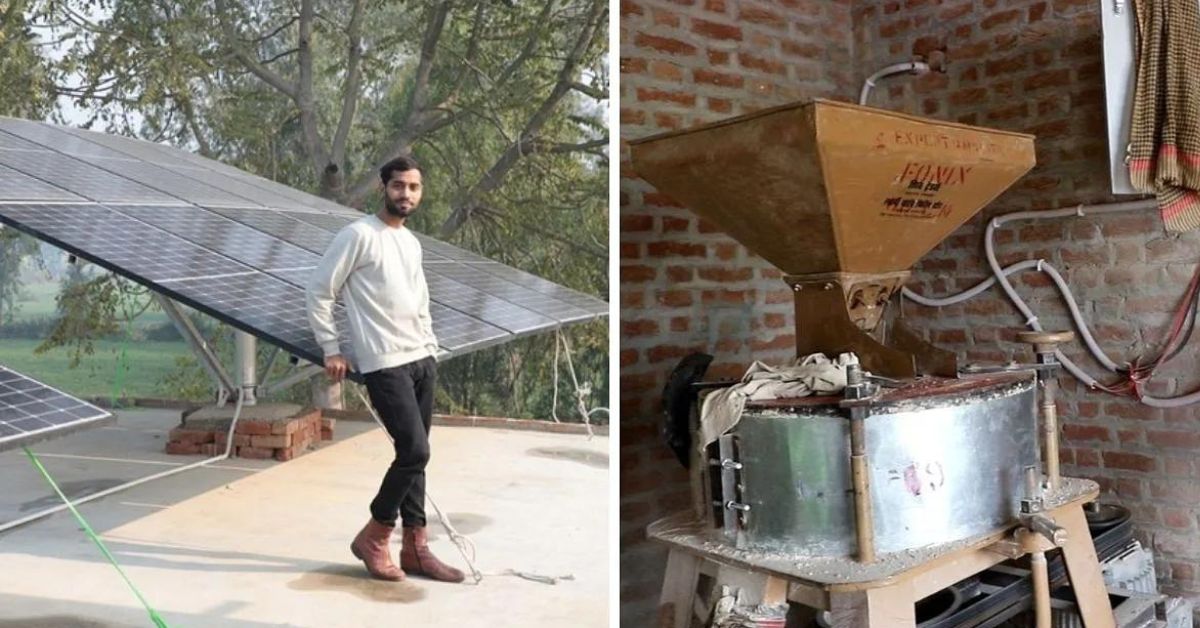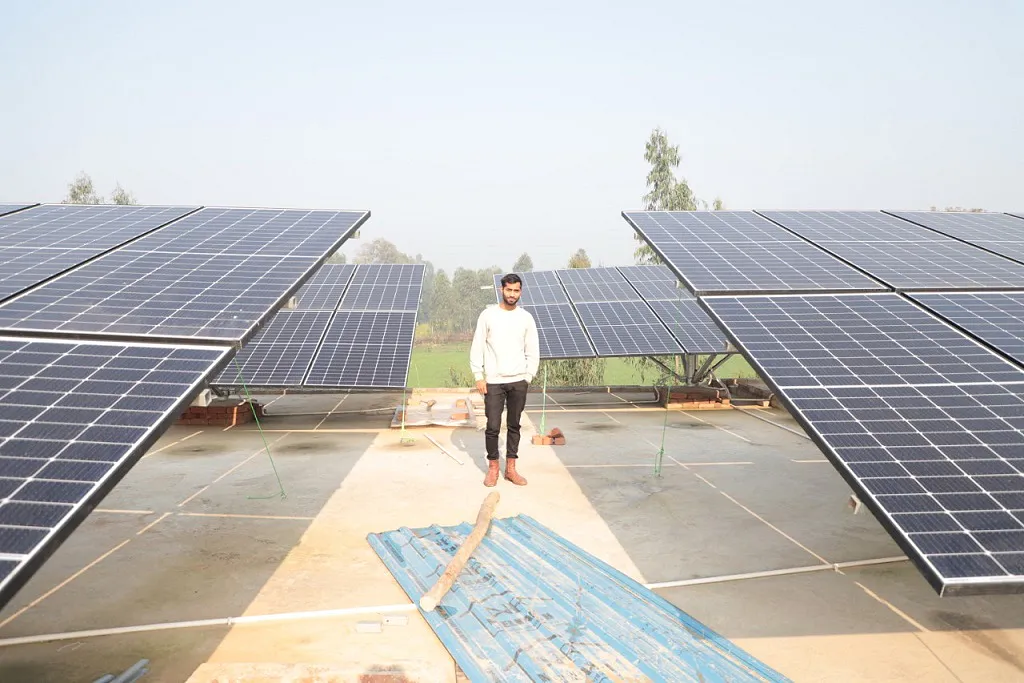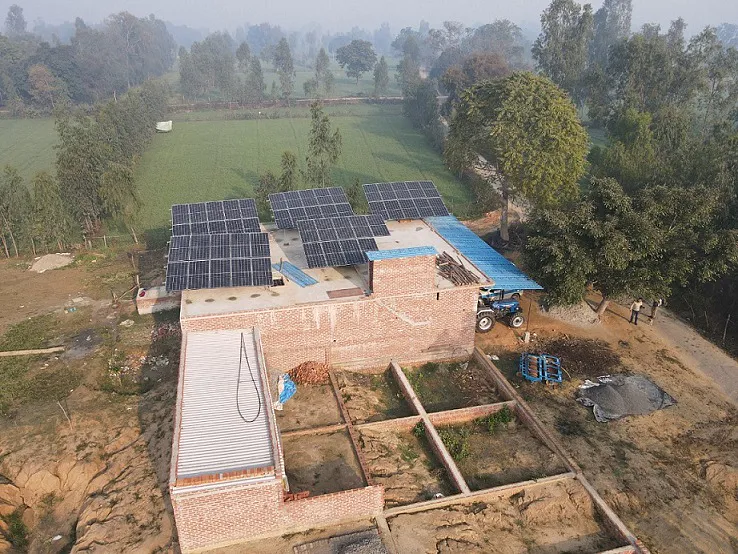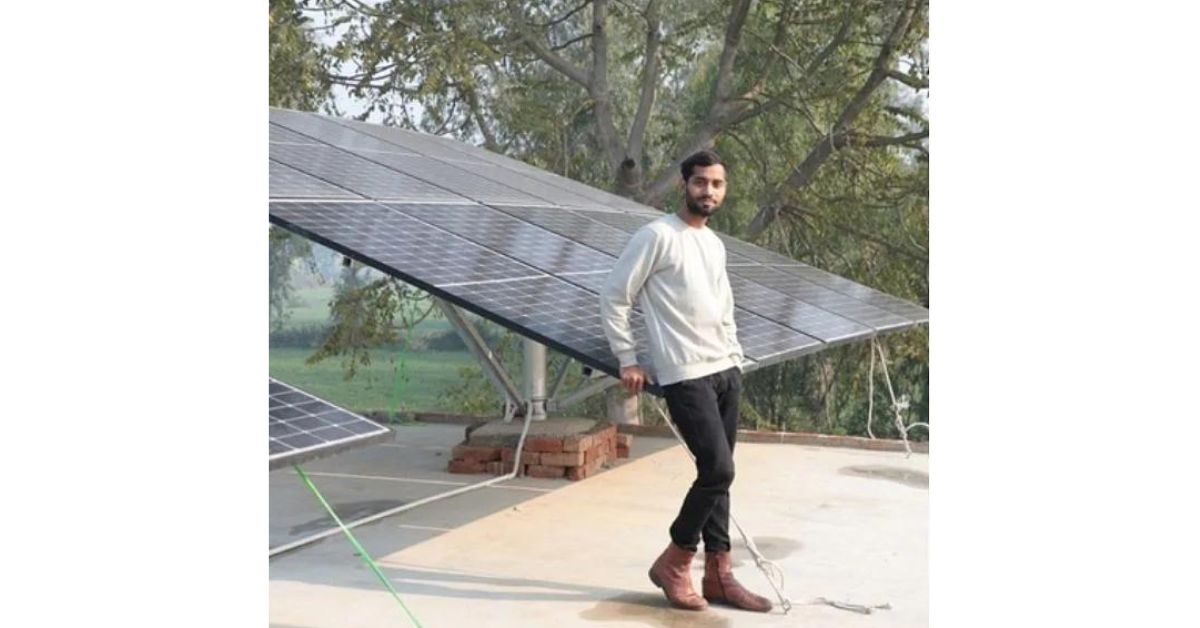How I Reduced Electricity Bills for My Flour Mill Biz From Rs 3 Lakh to Zero
V K Mohan Chauhan of Uttar Pradesh set up solar panels to run a flour mill that is now completely self-sufficient.

In Jalalabad district of Uttar Pradesh, there’s a flour mill business which generates no electricity bills.
V K Mohan Chauhan, a resident of Lashkarpur village, has set up a flour mill called Solar Atta Chakki, which is self-sufficient. “Having completed my graduation from a local college, I chose not to work elsewhere but become an entrepreneur,” Mohan says, adding, “I was also clear about not wanting to move out of my village.”
Despite the cost of setting up a flour mill not being very high, the cost of running it and the electricity it consumes is very high.
By the end of 2021, he started thinking about starting his own flour mill. He says, “While the demand for flour was almost constant the huge electricity bill that running a mill generated was a huge deterrent for many. It was to solve this problem that I started thinking of ways to decrease the electricity costs.”
The idea of a flour mill being run without any dependence on electricity or diesel was a challenge that Mohan was happy to solve.
Photo courtesy: V K Mohan Chauhan
He says, “Even if I were willing to pay the electricity charges, the village has very long periods of power cuts. This makes the business unviable. I currently own a 15 horsepower motor, which if used generates a monthly bill of almost Rs 30,000.”
Mohan spent some time researching solar panels. He says, “The initial cost of installing a solar panel seemed high but the long-term benefit of it outweighed that. Initially, I installed a solar panel which generated 120 units of electricity every day. This is more than enough to run my flour mill without any challenge.”
After running this for a while, Mohan installed five solar panels, each of 440 volts. He says, “The solar panels generate direct current (DC) from sunlight, which is converted into alternate current (AC) through a Variable Frequency Device (VFD). The panels are placed in such a manner that they receive sunlight throughout the day. These panels are fixed firmly on the stand and are brought to the Miniature Circuit Breaker (MCB) distribution box with the help wires.”
On challenges, he says, “On days when the sun shines bright there is never a problem, however, there are days in winter when it is very foggy and the sun is impossible to spot. I have faced this challenge during the winters.” A solution to this is the on-grid or grid-tied solar system, which is a system that works along with the grid.
This means that any excess or deficiency of power can be fed to the grid through net metering.
Photo courtesy: V K Mohan Chauhan
Many residential complexes opt for an on-grid solar system as they get a chance to enjoy credit for the excess power their system produces and save on their electricity bills.
Speaking about the savings, he says, “It usually costs Rs 2.5 lakh to Rs 3 lakh to set up a flour mill and the annual electricity bill comes to around Rs 3 lakh. By installing the solar panels my electricity bill has fallen to zero.”
How to set up a solar mill:
· For a small to mid-sized mill, a motor with 3 horsepower is good.
· The solar panels must be 1.5 times larger than the horsepower motor installed.
· For example, if you have a 3-horsepower motor then the solar panels should be at least 5 Kilowatt (1 hp= 0.74569 kwh).
· Most solar panel companies provide a long warranty (up to 25 years) and one must check this before making the purchase.
· Ensure that you maintain the solar panel as specified by the company representatives. Annual maintenance may also help prolong the life of the solar panels.
Source:
(Edited by Yoshita Rao)
If you found our stories insightful, informative, or even just enjoyable, we invite you to consider making a voluntary payment to support the work we do at The Better India. Your contribution helps us continue producing quality content that educates, inspires, and drives positive change.
Choose one of the payment options below for your contribution-
By paying for the stories you value, you directly contribute to sustaining our efforts focused on making a difference in the world. Together, let’s ensure that impactful stories continue to be told and shared, enriching lives and communities alike.
Thank you for your support. Here are some frequently asked questions you might find helpful to know why you are contributing?


This story made me
- 97
- 121
- 89
- 167













